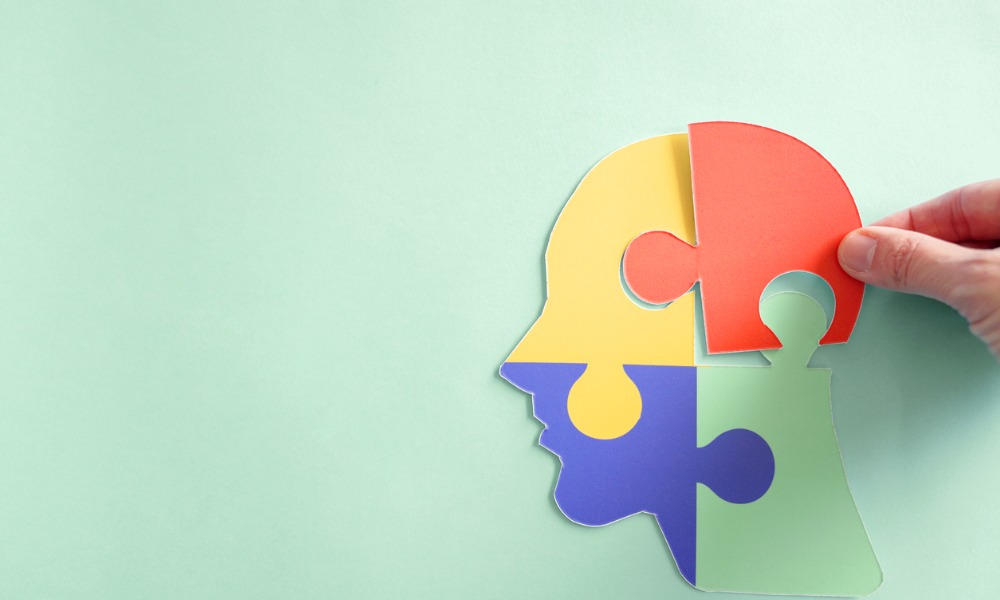
As stress and burnout reigns, HR leaders must protect their people and their own mental health simultaneously

With burnout on the rise, HR leaders and employers are having to come up with ever more eclectic ways of supporting their people whilst also safeguarding their own mental health. But why is stress so heightened right now? And, more importantly, how can leaders leverage their position to help ease the burden on employees?
Speaking to HRD, Julie Develin, Sr. Partner, HCM Advisory & Human Insights at UKG, says that a lot of the pressures people are feeling right now stem from economic and societal challenges.
“I think a lot of it has to do with the world we live in,” says Develin. “I wouldn’t even say it’s as much about work alone so much at this point. If you look at the economic instability so many folks are going through, that we're all going through as a collective society, look at job insecurity and the changes that are going on in the world - I think that, among many other factors, definitely contributes to a heightened sense of stress.”
And for HR leaders, the issue is twofold. While it’s part and parcel of the job to protect employee wellbeing, it’s also essential that practitioners look after their own mental health – something that’s made even more difficult with growing workloads.
“There’s a lot of expectations on HR leaders,” says Develin. “There are so many employees that are facing heavier workloads these days – that line between work and life has been completely blurred because of 24/7 connectivity. There’s this pressure to be constantly on, constantly responsive.”
So, what can employers do to further protect their HR teams? Develin thinks leaders need to stop being inadvertently patronizing in their advice.
“When we talk about self-care and someone suggests ‘going for a walk’ or ‘journaling’ – it drives me a little crazy,” she tells HRD. “Don’t get me wrong—this may work for some people, but it is not a universal fix. Self-care is such a personal thing, so for an employer to tell an employee to ‘take a stroll and it’ll make you feel better’ – in some ways that might do more harm than good.
“One thing that that employers can do is be cognizant of the workload that they're placing on HR. I always say I’ve never met an HR department that was overstaffed – so ensure that the headcount is there. Conduct regular check-ins and provide a safe space for HR professionals to discuss their workload to discuss their challenges and their wellbeing.”
According to research from The Workforce Institute at UKG, 69% of employees say their managers have the greatest impact on their mental health – more so even than their doctor (51%) and their therapist (41%). But the issue isn’t as silent and unseen as many employers believe it to be. While it can be initially difficult to spot the signs of poor mental health in teams, one way of assessing it entirely is by being sensitive to a psychologically unsafe workplace.
“I think a workplace with poor psychological safety may also have a lack of diversity and inclusion as well,” adds Develin. “This means that these organizations are less likely to attract and also to retain a diverse workforce. When it comes to poor psychological safety, employees tend to avoid interactions - they’re more likely to feel anxious, feel stressed and will eventually leave.”
So, what’s to be done? While HR leaders can’t exactly shift the externa pressures on employees right now – like decreasing inflation and improving the cost-of-living crisis – they cannot let work compound these issues too. And this begins with investing in authentic benefits platforms.
“I think, generally, employers don’t do a very good job in communicating their benefits to their people,” says Develin. “Afterall, a benefit is not a benefit unless someone understands what it is that they get from having the benefit. I wager that if you asked 100 employees to name their healthcare provider, half wouldn’t be able to. That’s interesting when you think about just how important healthcare coverage is here in Canada and the US.”
Develin tells HRD that there’s a lot of challenges around benefits that can take a significant toll on employees’ mental and physical health. Questions around paid time off (PTO), around mandated leave and doctor’s notes all need to be communicated and answered properly by employers.
“Secondly to that,” says Develin, “is training. I think investing in development programs can really boost confidence, job satisfaction and have a positive impact on mental health – which is a motivating factor. Providing people the opportunity to grow it helps the employee and the employer. It also helps employees see that we really do care about them as a person and not just a worker, and are invested in their growth and wellbeing.”
Want to glean more top tier insights from leading industry professionals? Book your ticket to HRD’s upcoming HR Leaders Summit here.